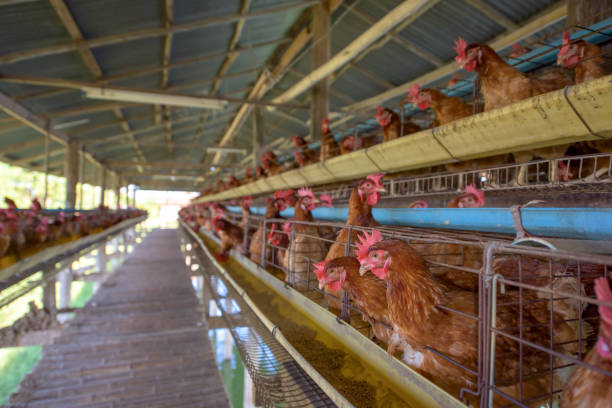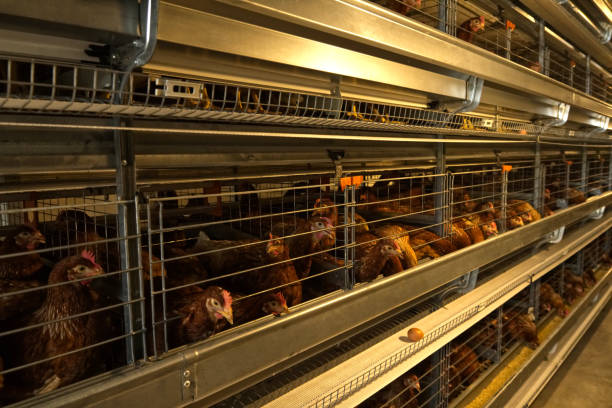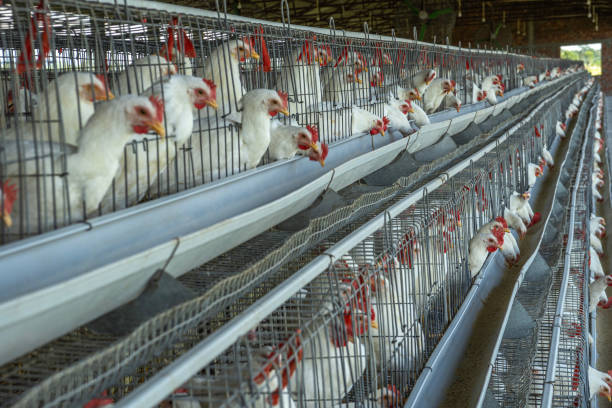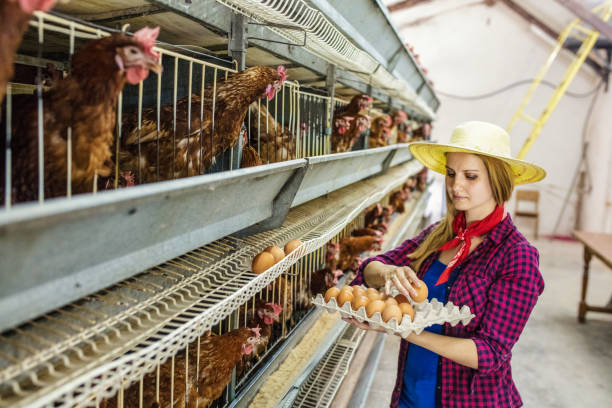
50000 Chicken Layer Farm Automation Solution
50000 Chicken Layer Farm Automation Solution

Running a 50,000 chicken layer farm is no small task — it demands careful planning, efficient systems, and solid automation to ensure high productivity, animal welfare, and profitability. But with the right setup, it’s entirely possible to manage such a large-scale operation smoothly and cost-effectively. At Livi Mechanical Manufacturing, we’ve helped hundreds of poultry farmers worldwide scale up their farms using smart automation solutions tailored to their specific needs. Whether you’re starting from scratch or upgrading an existing facility, this article will walk you through a comprehensive automation solution for a 50,000-head layer farm that balances performance, durability, and ease of management.
Smart housing design for maximum efficiency
The foundation of any successful large-scale egg farm starts with intelligent poultry housing. For a 50,000-layer farm, space utilization and climate control are critical. We recommend a modern A-frame cage system arranged in multiple tiers (typically 3–4 tiers), which maximizes bird density while ensuring excellent access for feeding, egg collection, and cleaning. Our all-galvanized steel cages are rust-resistant, easy to clean, and designed to last over 15 years with minimal maintenance.
Each house should be dimensioned to hold around 20,000–25,000 birds, meaning two poultry houses would accommodate your total flock. This split reduces management pressure and minimizes disease transmission risk. Inside each house, automatic feeding lines with chain or auger systems deliver consistent feed portions across all rows. Drinking lines with nipple drinkers are installed at optimal heights to prevent wastage and keep water clean. Ventilation is managed by tunnel ventilation systems with cooling pads and automated fans that adjust based on temperature sensors — essential for maintaining a stress-free environment year-round.
Moreover, natural daylight simulation through LED lighting programs helps regulate the hens’ laying cycles. These lights can be programmed to mimic sunrise and sunset, encouraging consistent egg production. With proper insulation, temperature control, and air quality monitoring, birds stay healthy and productive throughout their laying cycle.
Fully automated egg and manure management
One of the biggest time- and labor-saving advantages of automation is in egg and waste handling — two key areas where manual work can slow operations down significantly on a 50,000-bird farm.
Our automated egg collection system uses conveyor belts positioned under each cage tier. Eggs roll gently onto flat belts, travel through central egg corridors, and emerge at collection tables where they are cleaned, graded, and packed. This not only reduces breakage but also keeps eggs cool and sanitary as they’re transferred quickly out of the house. The entire process takes minutes, freeing up staff for higher-value tasks.
On the waste side, dried manure belts placed beneath each cage level collect droppings daily. These belts run automatically once or twice per day, transferring manure to an external storage area. Because the manure is removed before it becomes wet, it stays dry and is much easier to handle — perfect for composting or use as organic fertilizer. Compared to traditional pit manure systems, belt removal reduces ammonia levels dramatically, improving air quality and bird health.
Both systems are controlled through a central farm management panel, allowing operators to monitor activity, set schedules, and receive alerts if something goes off track. Remote monitoring via smartphone apps gives managers real-time visibility no matter where they are.
Integrated feeding, watering & health support
Feeding and drinking automation may seem basic, but when scaled to serve 50,000 birds reliably every day, precision matters. Our feeding system ensures every bird receives the same amount of feed at the same time — no more hand-throwing or uneven distribution. Feed is stored in silos (we suggest multiple 20–30 ton units) and delivered automatically into the house via vertical conveyors and horizontal lines.
Each feeder line is equipped with sensors to detect blockages or low flow, sending alerts before any section goes without food. Water lines use pressure regulators and anti-drip valves to maintain constant flow. Optional water medicators allow safe delivery of vitamins or vaccines directly through the drinking system — a major benefit during seasonal health challenges.
Biosecurity is non-negotiable at this scale. That’s why our farms include perimeter fencing, footbaths, changing rooms, and automatic door locks. Regular pest control, rodent-proof construction, and strict visitor protocols help keep diseases like avian flu at bay. Each house also supports misting systems linked to humidity controls, useful during hot periods to cool birds down.

We also recommend integrating RFID wing bands or leg tags for individual tracking in breeding stock, though for commercial layers, group monitoring based on weight, feed intake, and egg output gives sufficient insight. Daily reports generated by the control system help identify trends early — like a dip in water consumption signaling potential illness.
Support from planning to delivery — because details matter
Starting a 50,000-layer farm isn’t just about buying equipment. It’s about designing a holistic operation that works seamlessly from hatch to harvest. That’s where Livi’s full-cycle service comes in.
We begin with site evaluation: assessing soil type, wind direction, access roads, and local regulations to determine the ideal layout. Then we produce customized engineering drawings showing exact dimensions, machine placements, power requirements, and workflow patterns. Our engineers assist in selecting the right breeds (like Hy-Line Brown or Lohmann) based on market demand and climate suitability.
During construction, we supply technical supervision to ensure accurate installation. Once built, our team trains your staff on operating software, maintenance routines, and emergency procedures. Afterhand, we remain available for remote troubleshooting or spare part delivery — fast shipping from Zhengzhou means most components arrive within 7–14 days globally.
Every project is different, so we tailor packages accordingly. Whether you want fully automatic turnkey operation or a phased rollout, we design practical, budget-friendly solutions that grow with your business.
Ready to start building your future-proof egg farm? Get in touch today and let our experts design a complete 50,000 chicken layer automation solution for your land, goals, and budget. Share your location, target capacity, and timeline — we’ll send a free consultation report including layout sketches, equipment list, and ROI estimates.
Frequently Asked Questions
How much space do I need for a 50,000 chicken layer farm?

For two poultry houses holding 25,000 layers each, you’ll need roughly 2,500 square meters (about 27,000 sq ft) of indoor space. Add another 1,000 sqm for feed storage, egg packing room, utilities, and office space.
Can the automation system run without electricity?
No — automation relies on stable power. However, we recommend installing backup generators or solar power systems to avoid disruptions during outages.
What is the lifespan of your layer cages?
Our galvanized cages typically last 15–20 years under normal conditions, requiring only routine cleaning and minor part replacements.
Is it possible to expand later?
Absolutely. Our systems are modular, so you can add more cages, houses, or automation features anytime. Just inform us during initial planning so infrastructure can be scaled easily.
Do you provide installation teams overseas?
Yes. We send experienced technicians to supervise installation and train local workers, ensuring everything runs correctly from day one.
How many workers are needed to operate a 50,000-bird farm with automation?
With full automation, 4–6 skilled staff members can manage daily operations comfortably — including supervision, egg packing, maintenance, and health checks.
What kind of return on investment can I expect?
Most of our clients break even within 2.5 to 3.5 years depending on local egg prices and feed costs. Automation cuts labor and loss rates significantly, boosting net profits.
Are spare parts readily available?
Yes. We keep common components like motors, belts, and nipples in stock and ship them worldwide quickly. Many parts are also standard sizes usable with local suppliers.
Can I integrate this system with my own software or ERP platform?
Yes, many components can be connected to third-party farm management platforms using open API or Modbus protocols. Let us know your preferences upfront.
Do you offer financing options or partnerships?
While we don’t offer direct financing, we partner with agricultural banks and leasing companies in several countries to help customers secure funding. Ask us for referrals based on your region.
